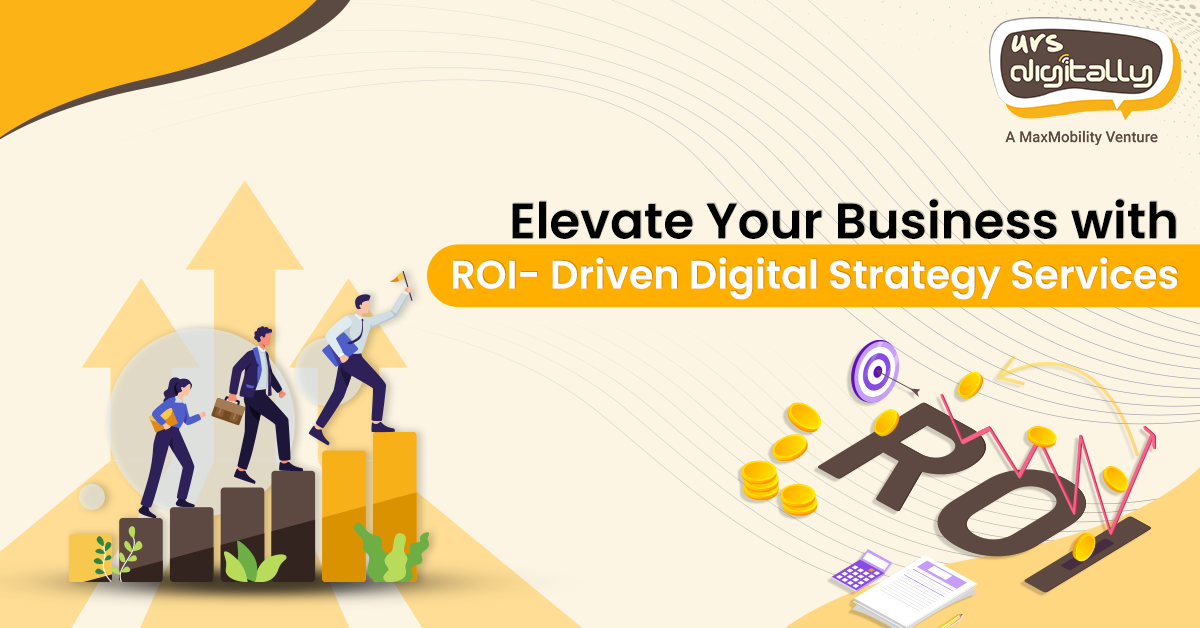With the vast array of digital marketing strategies available, it’s crucial to understand the significance of adopting ROI-driven digital strategy services for your business. Keeping pace with the digital wave, businesses are constantly seeking innovative ways to reach their target audience and maximize their returns on investment (ROI). But what exactly does ROI-driven digital strategy entail, and why is it essential for your businesses? Let’s embark to explore the nitty gritties of digital strategy services, their ROI implications, and how they can transform your business.
What is an ROI-driven digital marketing strategy?
Return on investment (ROI) is any day a priority credential for businesses to keep their profit funnel saturated. This perpetual effort of the companies to stay profitable encounters major challenges in the highly competitive digital space, cluttered with businesses of the same niche. So if you are planning an impressive digital presence for your business, it’s time to ensure that every penny invested yields better outcomes backed by a tailored ROI-driven digital marketing strategy.
What does it take to craft a precise ROI-centric digital strategy service?
Crafting a digital strategy blueprint is all about striking a balance between short-term gains and long-term sustainability. To sustain the highly competitive digital space, a strategic ROI-focused blueprint is the key to simplifying your route in elevating business and ROI. Curating an ROI-driven digital strategy includes certain factors to consider while ensuring those complement the company’s business objectives. Some steps are as follows:
Primary Level:
Define objectives: Begin by defining your business goals and what you want to achieve through digital strategy. These objectives could include increasing brand awareness, driving website traffic, boosting sales, or expanding your online presence.
Know Your Target Audience: Know about your target audience, their location, interests, and online behavior. These insights will help in tailoring your digital strategy to reach and engage with them effectively.
Competitor Analysis: Research and analyze your competitors’ digital strategies. Identify what works for them and not, including areas where you can differentiate yourself. Talk to the experts now for an in-depth report on your potential competitors.
Choose the Right Channels: Select the digital platforms that align with your target audience and business objectives. This might include social media, search engines, email marketing, content marketing, or paid advertising.
Content Strategy: Plan a content strategy that provides value to your audience. This could involve blog posts, videos, infographics, podcasts, or any other type of content relevant to your industry.
Secondary Level:
Search Engine Optimization (SEO): Optimizing your website and content for search engines by focusing on relevant keywords, meta descriptions, and high-quality backlinks. This proven organic digital marketing tactic
Paid Advertising: Consider paid advertising options like Google Ads, Facebook Ads, or display advertising to reach a broader audience. Set a budget, target specific demographics, and measure ROI.
Social Media Strategy: Create a social media plan that includes regular posting, engagement with followers, and paid promotions. Tailor your content to each platform and maintain a consistent brand image.
Analytics and Data Tracking: Implement analytics tools like Google Analytics to track and monitor key metrics like website traffic, conversion rates, and ROI.
Budget Allocation: Allocate your budget effectively among different digital channels based on their performance and relevance to your goals. Be prepared to adjust allocations as needed.
Testing and Optimization: Continuously test different strategies, content types, and ad variations to identify what works best. Use A/B testing to refine your approaches and improve results. Ensure that your digital assets such as your website and emails, are optimized for mobile devices. Mobile-friendly experiences are crucial to offer your audience a superior user experience.
Regular Reporting: Create regular reports that summarize the performance of your digital strategy. Use these insights to make informed decisions and refine your approach over time.
Adapt and Evolve: The digital landscape is ever-changing. Be open to adapting your strategy as new technologies and trends are ever emerging.
Can ROI-driven digital marketing strategy work for small businesses with limited budgets?
Absolutely! ROI-driven strategies allow small businesses to make the most of their resources. By focusing on cost-effective tactics, careful budget allocation, and data analysis, even small businesses can achieve impressive ROI results.
ROI-driven digital strategy guides a business through the vast digital landscape while empowering you to make informed decisions, maximize your marketing investments, and achieve remarkable success in reaching your target audience. So, invest in ROI-driven digital strategy services by UrsDigitally to watch your business thrive and survive through the tough digital terrain. Have questions in mind? Book a consultation with our digital strategists today.


